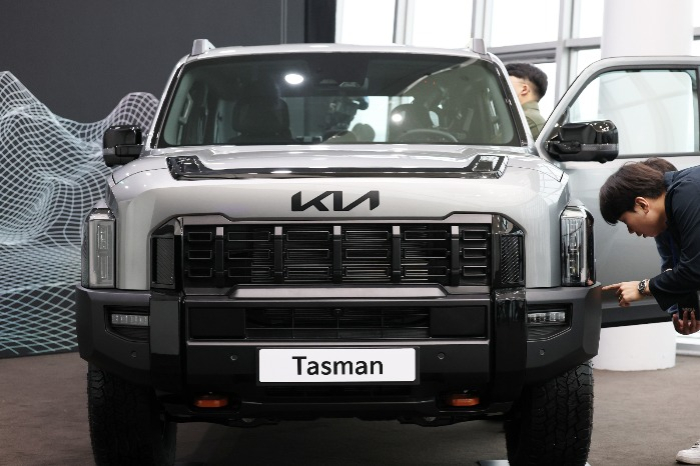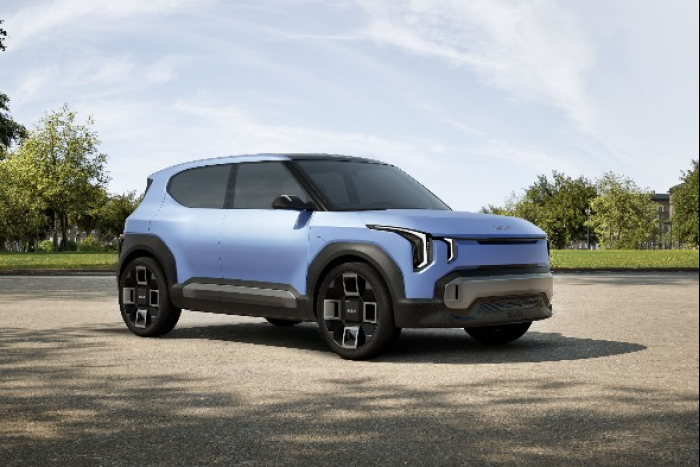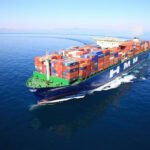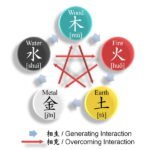
Kia Corp., South Korea’s second-largest carmaker, will build an electric pickup model tailored for North America to enter the world’s largest market of pickups, which it expects to offset the impact of the US tariff hikes, Chief Executive Song Ho-sung said on Wednesday.
The carmaker under Hyundai Motor Group will also make its foray into the purpose-built vehicle (PBV) market with the launch of the PV5, in July.
Kia is expanding its product lineup, bracing for a potential hit from Washington’s imposition of 25% reciprocal tariffs on imports from South Korea, which took effect on April 9.
During its 2025 CEO Investor Day, Song said a new pickup model for North America will be a mid-size electrified vehicle based on a next-generation EV platform. It targets a 7% share in the region’s pickup truck market with annual sales of 90,000 units in the medium to long term.
The CEO said the upcoming pickup model tailored for North America will be differentiated from the Tasman unveiled in October. The Tasman is its first pickup truck with a 2.5-liter gasoline engine and targets Australia, South Korea and other emerging markets.

Kia’s electric pickup for North America will feature best-in-class cabin and cargo space, alongside advanced towing capabilities, according to Song.
It will also come with specialized driving features to enhance handling in off-road conditions, as well as class-leading safety systems and a next-generation infotainment platform.
PURPOSE-BUILT VEHICLES
To diversify its PBV models, Kia plans to roll out the PV7 in 2027 and the PV9 in 2029, following the launch of the PV5, a mid-size model, in July.
PBVs offer customizable interiors for various uses such as passenger transport, cargo delivery and mobility service for the transportation-disadvantaged. Kia aims to sell 250,000 units of PBVs in 2030.

TARIFFS, FALLING DEMAND FROM CHINA
Of the vehicles Kia sold in the US in 2024, 60% were produced at its plants in South Korea or Mexico. Mexico is subject to a 25% duty by the Trump administration, which is temporarily delayed.
“We’ll begin realigning our manufacturing operations, directing as much output as possible from US plants to meet domestic demand,” Song added.
In 2025, Kia aims to sell 3.22 million units both at home and abroad. It plans to increase the figure to 3.75 million units by 2027 and 4.19 million units by 2030, according to the CEO.
However, the 2030 target is 2.6% lower than its previous projection released last year, which Song said reflects its more cautious outlook for the Chinese market.
“With the demand from China on the decline, we plan to utilize our Chinese factories as export hubs overseas to offset declining domestic sales in China,” he explained.

ECO-FRIENDLY MODELS
By 2030, Kia aims to bump up eco-friendly car shipment to 2.333 million units from this year’s target of 897,000 units. The 2030 sales projection for hybrid models is 21.7% higher than last year’s figure, while the 2030 target for EVs represented a 21.3% decrease compared to 2024.
Amid a protracted slowdown in EV demand, it is seeking to broaden the base of EV drivers by rolling out the EV2, its new entry-level electric sport utility vehicle, in 2026. It will join its EV lineup, including EV3, EV4, EV5 and EV6.
By Bo-Hyung Kim and Jung-Eun Shin
kph21c@hankyung.com
By Yeonhee Kim edited this article.














